The bicycle is back in the spotlight, but now it is the electric version that is attracting attention. After a very long incubation period it is clear that the e-bike is here to stay. Nevertheless, it would appear that the evolution of the e-bike is still ongoing. There are many variations in types and legal classifications that lead to confusion among consumers. This article is the second of a series of four on product evolution. They illustrate how technological evolution can explain ‘the origin of products’. Obviously, this type of evolution is different from what we are used to with biological species.
Prehistory
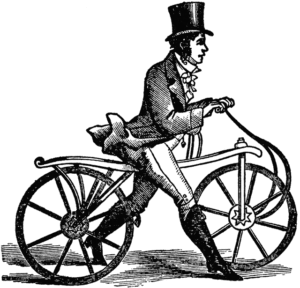
The oldest known serious candidate forerunner for the bicycle is the ‘running machine’ built by the German Baron Karl von Drais. His two-wheeled machine became known as the Draisienne and was first shown to the public in 1817. Two decades later a Scottish blacksmith by the name of Kirkpatrick MacMillan allegedly made a first mechanically propelled bicycle. In 1842 a Glasgow newspaper reported “a gentleman from Dumfries-shire bestride a velocipede of ingenious design” knocked over a little girl and was fined five shillings. This was probably the first bicycle traffic incident and many associate it with MacMillan.
Early days of the bicycle
The first bicycle designs were made mainly out of wood. Then, in 1866, the Frenchman Michaud made a first completely steel frame bicycle. This was made possible by advances in manufacturing technologies provided by the industrial revolution that also influenced many other new products like the typewriter discussed in the previous article.

The second half of the 19th century witnessed the advent of many bicycle and tricycle designs with both direct and indirect transmission. Michaud’s velocipede was a first with a direct drive to the front wheel. Riding this apparatus was not at all comfortable and required lots of skill and force. This phenomenon was even more strongly apparent in the ‘Ariel’, a bicycle introduced in 1871 by James Starley, that also became known as the ‘High Bi’, ‘Ordinary’ or the ‘Penny-Farthing’. This bicycle was only intended to be ridden by higher middle class and upper class young men who used it to show off their athletic skills. Riding it was not without danger as the 125 cm diameter direct driven front wheel with solid rubber tires gave it a very high centre of gravity. There was as serious risk of toppling over. As these high bicycles were used for sports competitions, the front wheel evolved into larger versions allowing it to be cycled/move even faster. For women or elderly of that time, riding this extreme machine was clearly no option.
The ‘Penny-Farthing’ was only intended to be ridden by higher middle class and upper class young men who used it to show off their athletic skills
Experiments with the many bicycle and tricycle designs eventually gave rise to the first modern bicycle that was introduced in 1885 by John Starley (related to the above namesake) and named the ‘Rover Safety Bicycle’. This new machine featured a chain driven rear wheel and a diamond shaped frame. Then in 1888 John Boyd Dunlop invented inflated rubber tires with the aim of damping vibrations. Pneumatic tires provided bicycles with much sought after comfort. It also transpired that the new bicycle design with pneumatic tires allowed for faster cycling than was practically possible with the bouncy High Bi. Besides that it proved to be less difficult to ride and that meant it was no longer only suitable for young and athletic men. Consequently, the iconic high-wheeled bicycle lost its appeal and disappeared from the scene. Soon even women and elderly started to cycle and, in this way, selection by the market favoured the Rover Safety Bicycle. All subsequent bicycles would retain its main design features and, as a result, it became the ‘mother-of-all-bicycles’.
The Rover Safety Bicycle design with pneumatic tires allowed for faster cycling and proved to be less difficult to ride as a result of which women and elderly started to cycle as well
First Electrics
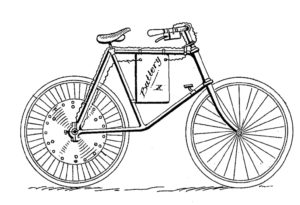
In the 19th century, electricity sparked a lot of experimentation. Besides the incandescent lamp and telephones, electric automobiles were also introduced and commercially produced. An early patent for electric bicycles dates from 1895 when Ogden Bolton from the state of Ohio claimed an improvement in electric bicycles, meaning that they must have existed at the time. However, the electric bicycle did not flourish until more than a century later.
New Electrics
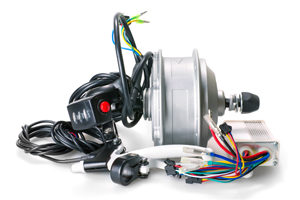
While the industrial revolution brought us steel in many shapes and types and allowed products like the bicycle to be made, the last half of the 20th century provided us with microelectronics. In the 1990s electronic components became available that enabled sensors and power controls to be made that are essential for a properly functioning e-bike. The advent of laptop computers and mobile telephones also boosted the development of battery types (nickel-cadmium (NiCad), nickel-metal hydride (NiMH) and thereafter lithium-ion polymer (Li-ion)) that were manufactured in huge volumes. This paved the way for new designs for the electric bicycle. Compared to the conventional bicycle it features two new subsystems, namely an electric motor to support propulsion and a battery to provide energy. An example of these new electric bicycles is the Sparta ION, which was introduced in 2003 and which was voted bicycle of the year in 2004. Nevertheless, the new electric bicycle was still met with scepticism and the claim that it was a product for the elderly certainly raised eyebrows.
Improvements in microelectronics and battery technology made properly functioning e-bikes possible a century after they were first introduced
However, this changed over time thanks to improving technology, more design variants and decreasing costs. The electric propulsion is used as a booster and extended the range of these bicycles. Soon people were using the e-bike to commute and it therefore started competing with other means of transport (mopeds, cars etc.). The sales of electric bicycles increased rapidly, accounting for 21% of new bicycles sold in the Netherlands in 2014, up from 10% in 2008. The increased use of (e)bikes has led to traffic jams and a shortage of parking space. As a consequence Dutch municipalities now anticipate that significant investments will be required to get the bicycle infrastructure up to the required level.
Competing solutions
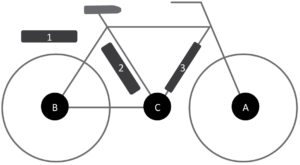
At the time of writing the electric bicycle is a typical example of a product for which the design has not yet stabilized. There is still a lot of competition between the design variants for the e-motor and battery subsystems. The electric motor is currently offered in three positions, namely A-front wheel, B-rear wheel and C-crank axle. All solutions have their pros and cons. Having the motor in the front wheel (A) is technically the simplest and cheapest solution. However, this position has a negative effect on the controllability of steering as the e-motor kick is a bit abrupt and pulls the front wheel through corners. It is known that this has increased the number of fall incidents, especially amongst elderly people who sometimes have longer reaction times. Installing the motor in the rear wheel (B) is more expensive as the construction of the rear wheel is more complicated. This position does not have the same drawbacks as the motor positioned in the front wheel. However, it does require a sophisticated mechanism to control the tension on the chain, which, in turn, controls the e-motor. A third, more recent, solution is to place the motor in the crank axle (C). This solution is the most radical in technology and design terms, as it requires the construction of the frame around the crank axle to be changed. This implies the use of a non-standard, and therefore more expensive, frame. However, the advantages of this solution are a more direct drive, robustness, position close to the centre of gravity and the use of cheaper conventional wheels.
As far as the battery is concerned, three design solutions are available, namely 1-beneath the rear carrier, 2-between seat tube and rear wheel and 3-in the down tube. The battery position suggested in the 1895 patent, on the upper tube or the horizontal frame tube, is no longer considered viable. Position 1 beneath the rear carrier is often used. It has the advantages that the battery can easily be exchanged and enables a simple construction. However, it is the highest position used for batteries and significantly increases the centre of gravity, thereby making the bicycle less stable. The advantage of position 2 between seat tube and rear wheel is that it lowers the centre of gravity, thereby increasing stability. The battery can also be exchanged, although not as easily as in position 1. Besides that the frame needs to be adjusted in order to position a battery in position 2, as normally there is insufficient space for a battery here. Position 3 in the down tube also has the advantage that it lowers the centre point of gravity and thus enhances stability. A disadvantage is, however, that the down tube needs to be designed to house the battery, which implies a frame that is not standard and therefore more expensive.
The different design solutions for subsystems of electric bicycles are still competing in what is an evolutionary race
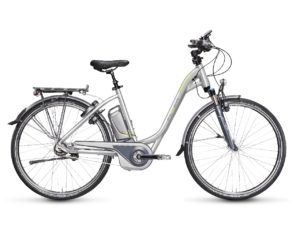
The Sparta Ion from 2003 was designed with its battery hidden in the down tube (3) in order to avoid looking alien. The e-motor was also visually hidden and placed in the rear wheel. A few years later, the growing popularity of e-bikes allows more design freedom. The e-bike pictured for 2017 in the Flyer T8.1 Comfort was rated ‘best tested’ by Consumentenbond, the Dutch consumers’ association. This e-bike features a large battery between the seat tube and the rear wheel (2) and an e-motor in the crank axle (C).
The different design solutions for subsystems of electric bicycles are still competing in what is an evolutionary race. Time will tell whether certain combinations of subsystems become dominant. Once the competition between different solutions for battery and motor systems is over, it will be easier for consumers to choose which e-bike to buy. What is more, economies of scale will be achieved and prices can go down. This will further boost e-bike sales.
Variants, naming and legislation
E-bikes are classified according to the amount of power support provided and the way this power is activated and controlled. E-bikes provided with up to 250 Watts commonly switch off the power support at speeds in excess of 25 km/h. Pedelec, which is short for pedal electric cycling, is a type of e-bike that is equipped sensors that switch on power support once cycling has started. Those pedelecs with motors rated above 250 Watts can attain much higher speeds and quite often reach 45 km/h or higher. Because of this, these speedy variants are named s-pedelecs.
In the event that the power is provided ‘on demand’ by a throttle, only the generic name e-bike is used. The use of a throttle to activate the power makes the bike behave more like a moped or motorbike. Often these variants have power ratings of over 250 Watts and sometimes even 750 Watts. It may come as no surprise that in many places these beefed up two-wheelers are legally regarded mopeds or motorbikes.
There is no international standard, regulations vary widely and many countries are still struggling with the legal status of e-bikes
The legal classification has consequences for the type of roads the vehicles are allowed on, license plate demands and age requirements. There is no international standard and regulations vary widely. Obviously many countries are still struggling with the legal status of e-bikes. In some settings legislation will influence the development of the specifications for new e-bikes. In other situations the development of legislation will follow the evolution of e-bikes. In any event the future of the e-bike will be affected by the interaction between advancing product and legislation.

Conclusion
The story of the origin of the e-bike shows that this product was not ‘suddenly invented’ but emerged from an evolutionary process in which many factors influenced each other. The first e-bike incarnations were conceived not long after the ‘mother-of-all-bicycles’ appeared at the end of the 19th century and built on that design. However, the required technologies for power storage and control first had to evolve before satisfactorily functioning e-bikes could be designed and manufactured. The developments in battery technology and microelectronics at the end of the 20th century have thus been crucial for the rebirth of the e-bike. Meanwhile, it seems that the evolution of e-bikes is still going on.
As happened to the old-fashioned bicycle, the product was initially frowned upon as something that was unsuitable for healthy young men. Soon, however, the product turned out to be quite useful for certain types of use, such as commuting, and even better than other products. This made the e-bike acceptable to larger groups of users and this greatly boosted sales and its further evolution. Social conditions like perception by consumers therefore play a significant role in shaping the evolution of products.
Copyright © 2018 Huub Ehlhardt. All Rights Reserved. Please contact us for re-use of this article.
The book ‘On the Origin of Products’ is available via Cambridge University Press, Bol.com and Amazon. This site also provides an introduction to this title.
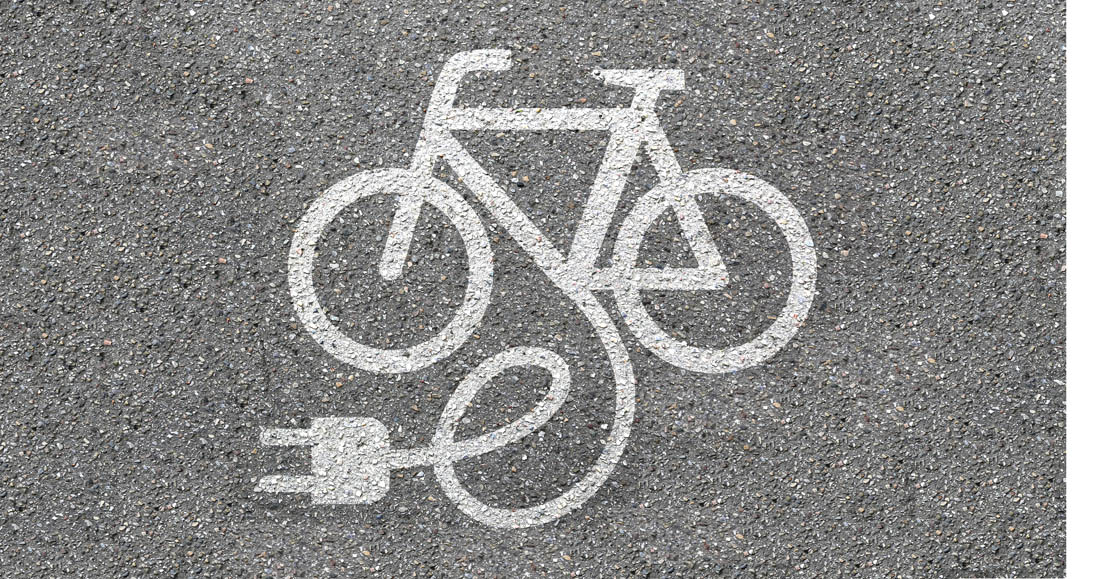

Greetings! Very helpful advice within this article! It’s the little
changes that make the most important changes. Thanks a lot for
sharing!
Nice article.
The exchange of muscle power for external power source has been tried on every hitherto muscle-driven instruments as soon as motors became available (whether steam, combustion, electric) on boats, cars, bicycles, lawn mowers, washing machines, etc.
In an article about (the history of) the piano-mechanism, written in 1999 I challenged mechanical designers to come up with a next step in its design, e.g. by using mechatronics. Such a next step seemed long due since Christofori created the prototype, 300 years ago.
Recently Faulhaber reported about an attempt in that direction in an article, see https://www.faulhaber.com/nl/markten/consumer/pianomechaniek/
English version of faulhaber additorial: https://www.faulhaber.com/en/markets/consumer/piano-mechanics/
Dear Hein,
Pianos may not have received auxiliary electrical engines yet, but of course they have received their electronic versions in the synthesizer! These also require less muscle power to play.
As similar and interesting evolutionary history is that of the typewriter, which went from mechanical to electric-power, to electronic support. Also see my article on the evolution of the word processor on this site. For the word processor, the evolutionary progress provided much more than only relieve of the mechanical labour now functionality like spelling checker support is also provided.
Thank you for your remarks on synthesizers and your advice to read the article on word-processing.
Allow me three further comments
1. Synthesizing sound via analogue or digital electronics, is in my opinion, an revolution in the generation of sound. Today sounds hitherto unheard of can be synthesized, natural sounding instruments can be imitated. Sounds can be designed and engineered, composing is the domain of creative programmers. The synthesizer is a machine which can be called ‘an instrument’ because, yes, it produces sound, albeit via loudspeakers.
The essence of this revolution is that the production of sound is now be separated from a natural sounding instruments. Creating music is no longer the privilege of a group of musicians mastering their instrument and interpreting a composition.
I would not, however, understand the synthesizer as an evolution in piano’s. Synthesizers are in another branche in the genealogy of artifacts, for instance in ‘electronics’. We are dealing with a revolution in producing sound, which in turn, is the result of an evolution in electronic components.
2. For an evolution in pianos I would like to stay within the domain, the same species, of hammer-struck string instruments. An evolution within the species of pianos could be one that helps the pianist to repeat a note faster, to allow several degrees of dampening for the dampening pedal, to make a piano more sensitive to the touch. Can the instrument become more of a ‘piano-forte’ than it has ever been? My hopes are on mechatronics.
In your article on typewriters I see the same duality.
To power typewriters with an electric motor was a classical small step in evolution within the species of typewriters, when electric motors took the labor out of striking keys, like power-steering in a car, or electrifying a bicycle
Word processing however is not an evolution in type-writing, it is a revolution in dealing with documents. In word processing, a text is separated from the ‘document’, that is was once chiseled in or written on. It is just like in synthesizers, where the sound is ripped free from ‘natural’ instruments. Electronics and computers allow to create a preliminary text on a screen, correct the spelling and edit the layout, engineering a document. Here, a text and a document are not the same thing anymore, the act of writing (or typing) is separated from producing a document, if any is document is produced at all. Text is a file of bits, lifted free from its carrier, not identical to a clay tablet, a stone wall, parchment or paper anymore.
This phenomenon can be observed in photography: the image is not the photo anymore. In earlier days, the image was identical to the painting, the picture, the film, identical to hardware.
The digital camera can grab an image over and over again, you edit one to your taste and then, if at all, print it as a photo.
3. At a higher level of abstraction, I find it problematic to use the word ‘evolution’ in the genesis of man-made products. In Darwins evolution, nature is procreating and adapting to its environment in incremental steps generation after generation. There is no intelligent intervention of men, or anybody else. The products that we humans create are called artifacts, intelligently and skillfully made objects. Artifacts do not procreate. Artifacts are adapted to their environment only because humans redesign them over and over again to their human (and inhumane) benefit. Such human interventions are not included in the evolution theory, are they?
Regards
Hein Reinders